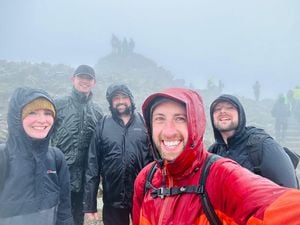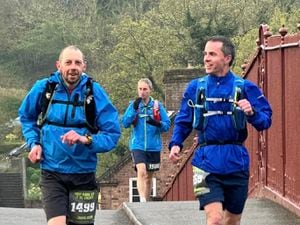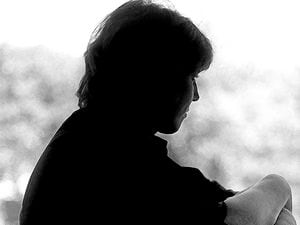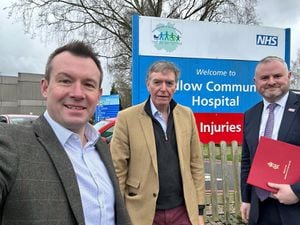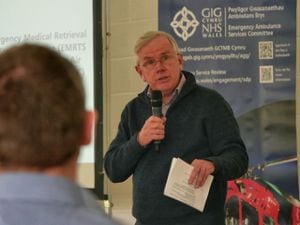How Linda is helping others after a rare skin condition changed her life
An NHS worker has shared how a rare disease changed her life in an effort to help increase awareness about how many people are affected by such illnesses.
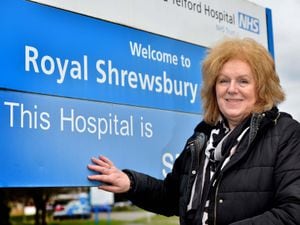
Linda Bradbury, a training and support officer at The Shrewsbury and Telford Hospital NHS Trust (SaTH), which runs the Royal Shrewsbury Hospital and the Princess Royal Hospital in Telford, has revealed the impact of her rare skin condition, and how it changed her everyday life.
She has shared her story, which tells of the initial difficulties with diagnosis, having to apply ointments every half an hour, and having to wear gloves just to use her hands.
She has also told of the difficulties in being able to do her job, and the impact on her self confidence.
Linda has revealed her story as part of Rare Disease Day in an effort to encourage more people to think about the effects of rare diseases – including employers and those conducting vital research.
Linda is one of 3.5 million people in the UK who will be affected by a rare disease at some point in their lives. She has the rare skin condition called Pityriasis Rubra Pilaris (PRP).
A disease or condition is defined as rare if it affects fewer than one in 2,000 people within the general population.
Currently, there are more than 6,000 known rare diseases, and new conditions are being described through medical literature on a regular basis.
A rare disease will affect one in 17 people at some point in their lives – 3.5 million people in the UK.
Linda hopes her story will encourage people suffering with rare diseases to seek the help they need, and to know that they are not alone.
It comes as Kal Parkash, equality, diversity and inclusion lead for SaTH, spoke of the importance of marking Rare Disease Day.
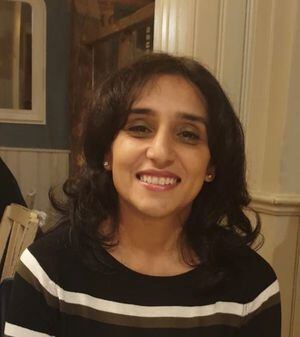
She said: “Building awareness of rare diseases is so important because one in 17 people will live with a rare disease at some point in their life.
"Despite this, there is no cure for the majority of rare diseases and many go undiagnosed.
“Rare Disease Day improves knowledge amongst the general public of rare diseases, while encouraging researchers and decision makers to address the needs of those living with rare diseases.”
Linda’s story
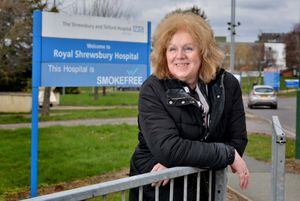
In November 2013, I returned from a walking holiday and noticed three tiny red spots on my left hand that I initially put down to an allergy.
The rash spread rapidly to my chest and face and within three weeks, the skin on my body was bright red from head to foot, I could hardly walk or use my hands properly, and basically I looked and felt like a burns victim.
My life changed when the first signs of PRP entered my life. I was initially misdiagnosed with Seborrheic Dermatitis, but when my condition failed to respond to the treatments prescribed by my GP and I got worse, I was referred urgently to the dermatology department at the Royal Shrewsbury Hospital. At that time, I knew nothing about this rare disease known as PRP, but I was supported by the dermatology team and listened to what they said about the condition and treatments available.
However, as PRP is classed as a rare condition, there was little information and guidance available outside of the hospital setting, so I also joined an international online support group.
Adjusting to, and living with, PRP through the acute stage of the disease and during the first year was the most challenging. My physical appearance changed dramatically because I had full body involvement. My skin was bright red and swollen, and I was caught up in the shredding and burning cycle constantly, so I had to apply heavy duty emollients and ointments every 20-30 minutes for months.
January 2015 was a key turning point in learning to live with the disease.
I decided I could not be defined by PRP, so I adopted a cat from Shropshire Cat Rescue and resumed yoga classes which helped both my fitness levels and mental health. This has been a life-changing experience. I am aware that I still have PRP – in fact I do not believe it will ever go away completely – but I have adapted, and over seven years later I now live with the remnants of the disease.
At my lowest point, I gained comfort and friendship from the PRP support group members and I continue to be an active member of the group offering support to “newbies” and those in need.
Living with PRP has been a long, and at times very difficult, journey and the memory of PRP is still there, but things slowly improved over time and I have, in the main adjusted to living and working with the condition.

